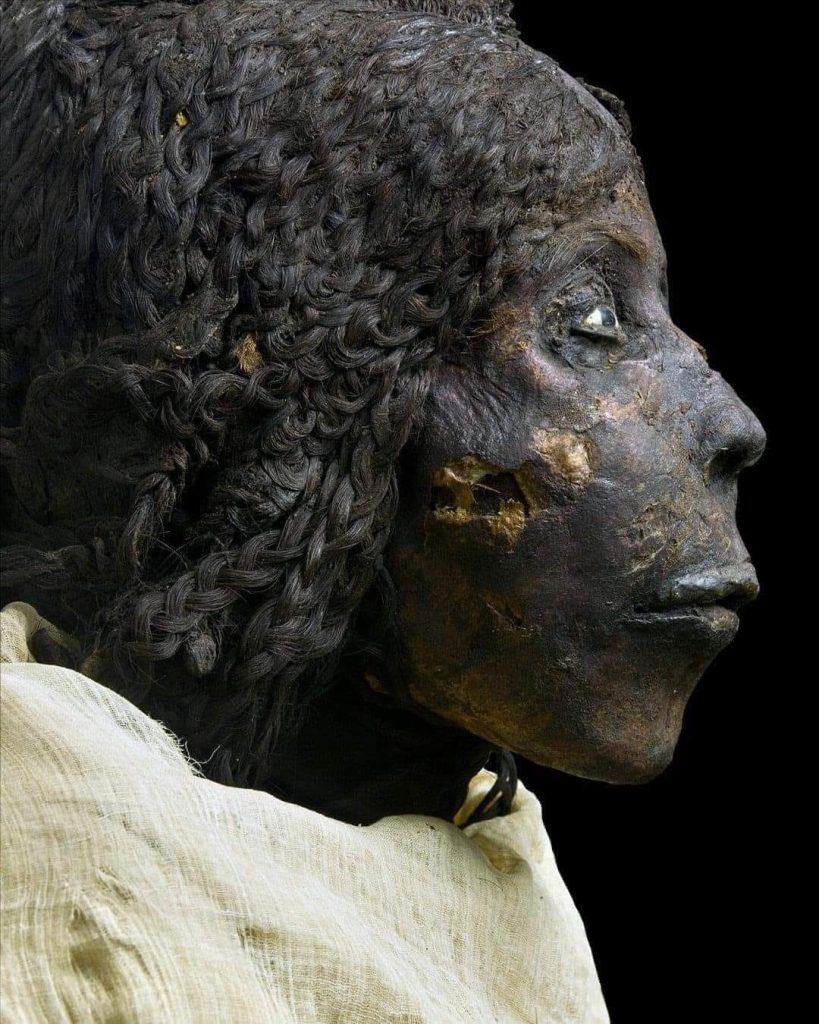Nodjmet, also known as Nedjmet or Notmit, stands out as a remarkable noblewoman from ancient Egypt’s 20th and 21st dynasties. Her life, intertwined with the transformative political and religious shifts of her time, offers invaluable insights into the complex dynamics of a society undergoing significant change. As the wife of Herihor, the High Priest of Amun in Thebes, Nodjmet occupied a unique position of power and influence during a period marked by the decentralization of traditional pharaonic authority and the ascendancy of the priesthood.
Although the details of Nodjmet’s early life remain elusive, her marriage to Herihor placed her at the center of Egypt’s shifting power dynamics. Herihor was not merely a religious figure but also a formidable political leader who wielded control over Upper Egypt during the waning years of the New Kingdom. The traditional power of the pharaoh was steadily weakening, and individuals like Herihor, who combined religious authority with political acumen, rose to prominence. Through her marriage, Nodjmet became an integral part of this evolving power structure, straddling the realms of religion and politics.

As the wife of the High Priest of Amun, Nodjmet’s influence extended beyond the domestic sphere into the broader political and religious arenas of Thebes. The role of high priests during this era was unparalleled in its importance, as they effectively governed large portions of Egypt. Women like Nodjmet, though not queens, wielded considerable authority within these frameworks. Nodjmet’s position likely involved managing temple affairs, participating in religious ceremonies, and engaging in the delicate negotiations that often arose between secular and religious authorities. This intertwining of responsibilities underscores the significant role women could play in shaping the political and cultural landscape of their time.
During this transformative period, the division of power between the pharaoh and the priesthood created a unique environment where individuals like Nodjmet could exert influence. While the pharaoh traditionally embodied both secular and divine authority, the increasing prominence of the priesthood redefined these roles. Nodjmet’s proximity to Herihor placed her in a strategic position to navigate these changing dynamics, bridging the gap between the old and emerging systems of governance. Her involvement in temple activities, including overseeing rituals and managing resources, highlights the crucial administrative functions she likely performed.
Nodjmet’s legacy is intrinsically tied to her role in this transitional era of Egyptian history. The Third Intermediate Period, during which she lived, was characterized by political fragmentation and decentralization. The weakening of centralized pharaonic power allowed regional leaders, particularly high priests, to assume greater control. This shift in power dynamics was mirrored in the societal roles available to women like Nodjmet, who leveraged their positions to influence both religious practices and political decision-making.
The enduring significance of Nodjmet’s life is evident in the cultural and historical records associated with her. While she may not be as well-known as other royal women of ancient Egypt, her contributions to the religious and political spheres are no less important. Her burial, which likely reflected her high status, serves as a testament to the respect and influence she commanded. The artifacts and inscriptions associated with her burial provide valuable clues about her life and the broader context of her era. These remnants allow modern scholars to reconstruct a narrative of a woman who skillfully navigated the complex interplay of power and religion during one of Egypt’s most tumultuous periods.
The intertwining of political and religious power in ancient Egypt is a defining feature of Nodjmet’s story. Her role as the wife of Herihor exemplifies how women could attain influence through strategic alliances and active participation in temple governance. Although not a ruler in her own right, Nodjmet’s status afforded her opportunities to shape decisions and policies that affected both Thebes and Upper Egypt. Her ability to navigate these roles speaks to her intelligence, adaptability, and deep understanding of the societal structures of her time.
Nodjmet’s life also sheds light on the broader cultural shifts occurring during the Third Intermediate Period. The decline of centralized authority and the rise of regional power centers created an environment where individuals could rise to prominence through their religious or administrative roles. Women, in particular, found new avenues to assert their influence, often acting as mediators and advisors within these emerging structures. Nodjmet’s story serves as a compelling example of how women contributed to the governance and spiritual life of ancient Egypt, even in the absence of formal titles or recognition.
The cultural significance of Nodjmet extends beyond her immediate contributions to Theban society. Her association with Herihor places her within the broader narrative of ancient Egypt’s transformation, highlighting the critical roles played by religious institutions in maintaining stability and continuity during times of political upheaval. This period of Egyptian history, often viewed as a time of decline, also represents an era of innovation and adaptation. Figures like Nodjmet exemplify the resilience and ingenuity that characterized this era, providing modern historians with a richer understanding of the complexities of ancient Egyptian society.
While much of Nodjmet’s life remains shrouded in mystery, the glimpses we have of her story reveal a woman of remarkable capability and influence. Her legacy, preserved through inscriptions and archaeological findings, underscores the importance of women in shaping the religious and political landscapes of their time. Nodjmet’s life offers a poignant reminder of the often-overlooked contributions of women in ancient history, challenging modern perceptions of their roles and highlighting the multifaceted nature of their influence.
In conclusion, Nodjmet’s story is a testament to the dynamic interplay of religion and politics in ancient Egypt. Her position as the wife of Herihor placed her at the center of a society in transition, allowing her to navigate and influence the shifting power dynamics of her time. Through her life, we gain a deeper appreciation for the complexity of ancient Egyptian society and the critical roles played by women in its evolution. Nodjmet’s legacy endures as a symbol of resilience, adaptability, and the enduring impact of individuals who shaped history during moments of profound change.





